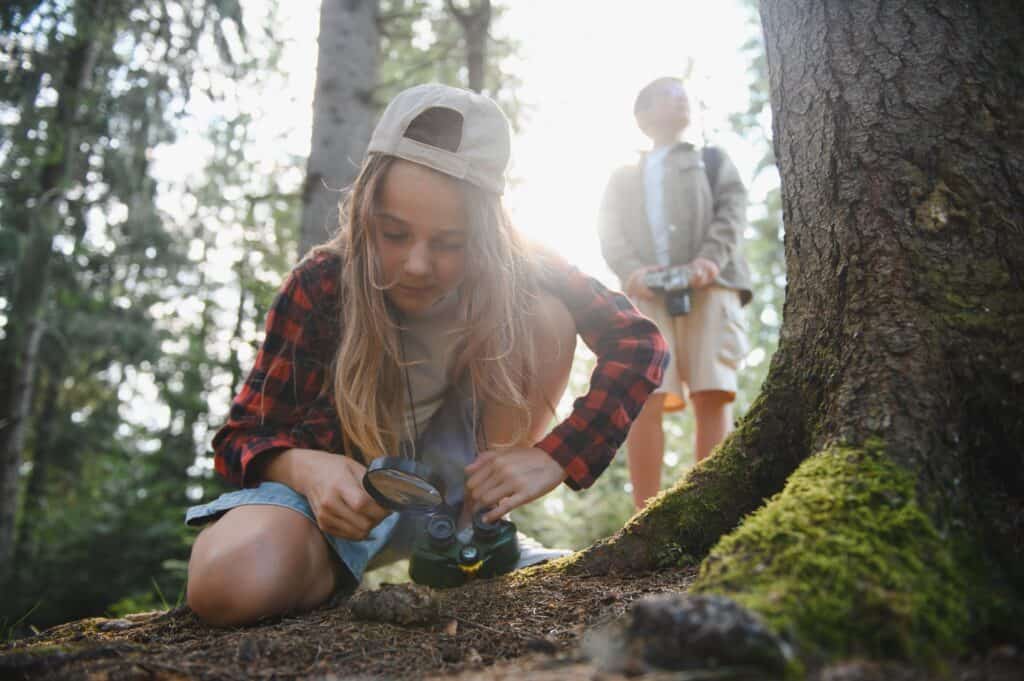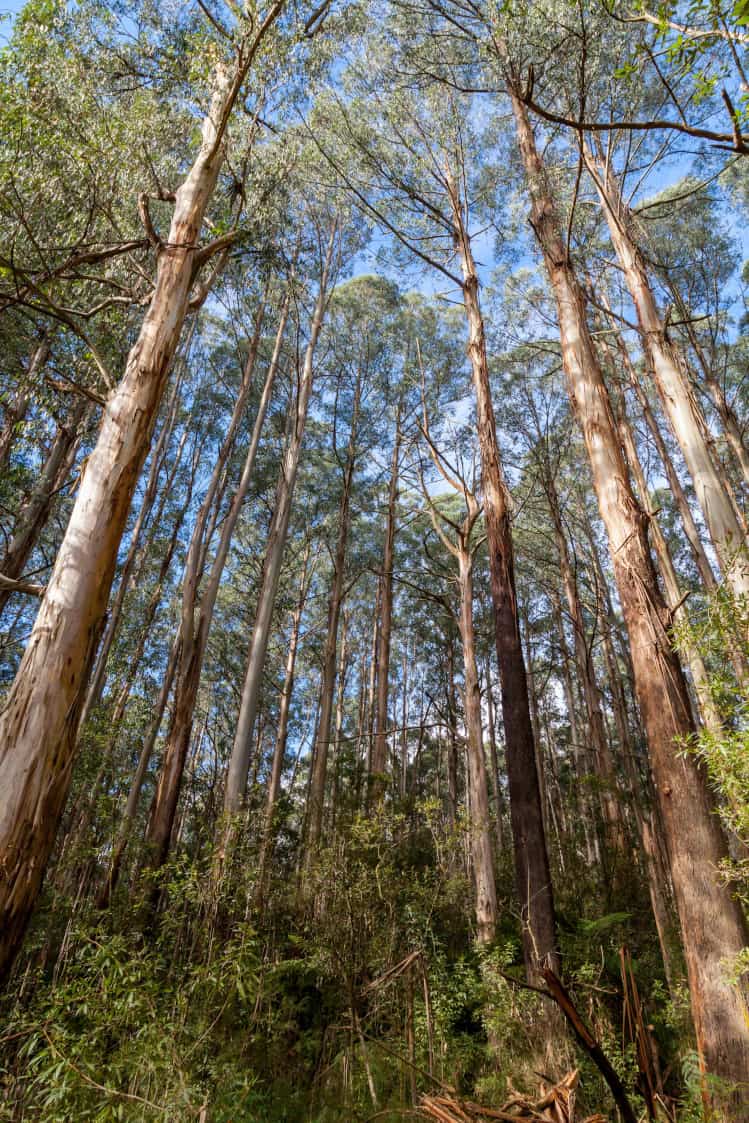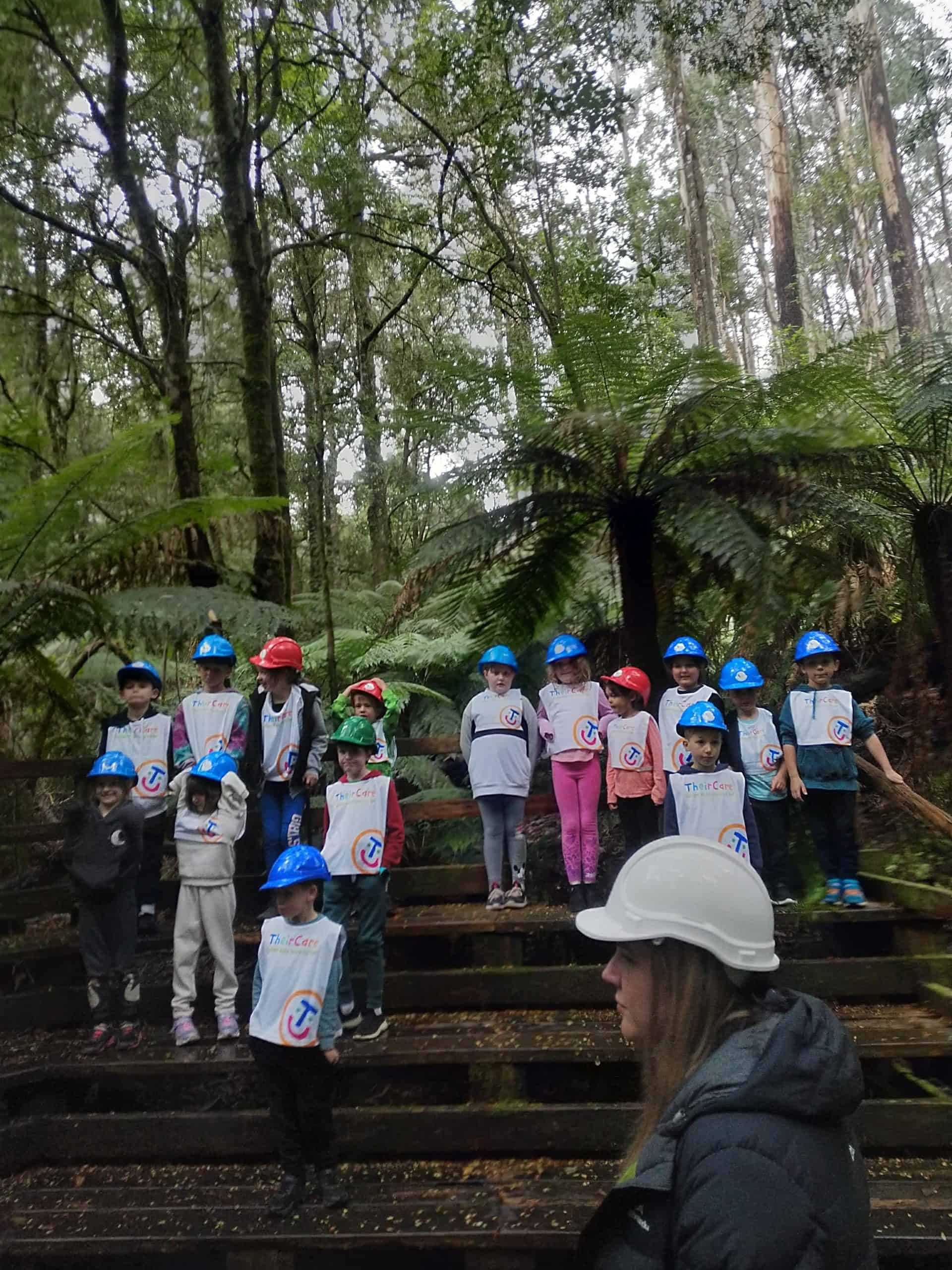Forest Discovery
-
Plants and Animals
-
Human Impacts
-
Biodiversity
-
Natural Processes & Ecosystem Services



Program Overview
Forests are a very important part of our world. Discover Mountain Ash (the world’s tallest flowing tree), soft ferns, mountain creeks, prickly plants and native wildlife! Learn what makes a healthy forest habitat, discover the different ways that people use forests and how we can ensure the sustainability of forests for the future. Students also have the opportunity to do important field work (observations, recordings and sketches).
The excursion includes a visit to a variety of forest ecosystems, where comparisons will be made between the Mountain Ash and Messmate Eucalypt Forests and a Cool Temperate Rainforest. The program also explores:
- Why and how trees are the lungs of the earth and home to many unique and endangered species and must be protected.
- The animals of the forest including the Leadbeater’s Possum, Victoria’s faunal emblem.
- All 5 senses in a loop walk to either a mountain ash forest or the Kalatha Tree – a living giant that stands testament to the resilience of nature and community spirit. This tree is one of the largest trees in Victoria standing 65 metres tall, 14m in girth and is 400 years old. Kalatha Tree can only be visited if school if time allows.
- Natural processes of the forest to provide clean drinking water to the city of Melbourne.
Inclusions and Notes
This is best as a 4 hour excursion. For schools travelling distances of greater than 1 hour, a 3 hour option is now also available.
Equipment supplied by Gould League: Safety helmets worn by all participants; worksheet and all tools required for fieldwork data collection.
Equipment needed by the school: A chartered bus (which is required to remain with the group at all times). First aid kit, insect repellant (important for insects in summer and leeches in winter), sun screen and PPE including hand sanitiser to kill viruses, bacteria and other micro organisations.
Please note that our Gould League educators will travel on your bus for the duration of your program time. We ask schools to ensure when booking coaches that 1 one seat is allocated for each group booked as they will provide commentary on the bus to students and guide the bus drivers. Please advise the Bookings Manager if there is no room on the coach for our educators, and travel fee of $0.88 per km will be added to your final invoice. This amount will vary according to the activities undertaken on the day which can vary due to local weather conditions. Maximum travel fee is $40. This covers the cost of one vehicle only as Gould League Educators will carpool.
Students needs to bring: Their own water and lunch, sunscreen, a clipboard, pencil, and a copy of the Gould League worksheet (usually sent 14 days prior to excursion so copies can be made for students) to guide the forest investigation; bag to take away your rubbish.
Restrictions: This Gould League program is delivered in the Toolangi State Forest, in the North Central Fire District and does not operate on days with a Fire danger rating of Extreme or Catastrophic. On rare occasions, programs may be postponed due to extreme weather predictions involving wind/storms. In both cases, these programs will be rescheduled at the earliest convenience of both parties.
Programs however DO operate during wet/snowy weather. Please contact us to discuss the best timing to optimize your group’s experience and ensure suitable clothing and footwear for the conditions predicted. Plan for wet weather from April-October, and expect temperatures at least 5 degrees colder than suburban Melbourne.
Curriculum Links
GEOGRAPHY: Data and Information
– Collect and record relevant geographical data and information from the field and other sources (VCGGC074)
– Interpret maps and other geographical data and information to develop identifications, descriptions, explanations and conclusions, using geographical terminology including simple grid references, compass direction and distance (VCGGC076)
GEOGRAPHY: Geographical Knowledge
– Types of natural vegetation and the significance of vegetation to the environment, the importance of environments to animals and people, and different views on how they can be protected; the use and management of natural resources and waste, and different views on how to do this sustainably (VCGGK082)
Elaborations
– exploring how vegetation produces the oxygen all land animals (including people) breathe, protects land from erosion by water or wind, retains rainfall, provides habitat for animals, shelters crops and livestock, provides shade for people, cools urban places, produces medicines, wood and fibre, and can make places appear more attractive
– explaining how people’s connections with their environment can also be aesthetic, emotional and spiritual
– describing how natural processes can break down and recycle some wastes safely. For example, through composting or purifying water as it moves through the environment
– investigating where a particular renewable natural resource comes from and how it is used, what sustainable use of this resource might mean and comparing a strategy to reduce the use of the resource (for example, recycling paper) with a strategy to increase the output of this resource (for example, planting more trees)
– visiting a national park and discussing different views on development in the park
– Similarities and differences in individuals’ and groups’ feelings and perceptions about places, and how they influence views about the protection of these places (VCGGK083)
Elaborations
– reading and viewing poems, songs, paintings and stories concerning people’s feelings about places as part of an exploration of the factors that influence views on the protection of places
– discussing why it is important to protect places that have special significance for people. For example, a wetland, a site sacred to Aboriginal and/or Torres Strait Islander peoples , a national park or a World Heritage site
– designing actions that people could take to protect and improve places in the local area that people perceive as important and discussing the likely reactions of different groups of people to these ideas
SCIENCE: Science Understanding-Biological Sciences
Living things can be grouped on the basis of observable features and can be distinguished from non-living things (VCSSU057)
Elaborations
– exploring differences between living, once living and products of living things
– identifying variations in the features of plants, for example, colour and shape of leaves, or types of flowers
– identifying variations in the features of animals, for example, body covering, ear shapes or number of legs
Different living things have different life cycles and depend on each other and the environment to survive (VCSSU058)
Elaborations
– making and recording observations of living things as they develop through their life cycles, for example, insects, birds, frogs and flowering plants
– recognising that environmental factors can affect life cycles, for example, fire and seed germination
– investigating the roles of living things in a habitat, for example, producers, consumers or decomposers
The Victorian Curriculum F-10 content elements are © VCAA, reproduced by permission. Victorian Curriculum F-10 elements accurate at time of publication. The VCAA does not endorse or make any warranties regarding this resource. The Victorian Curriculum F-10 and related content can be accessed directly at the VCAA website.
